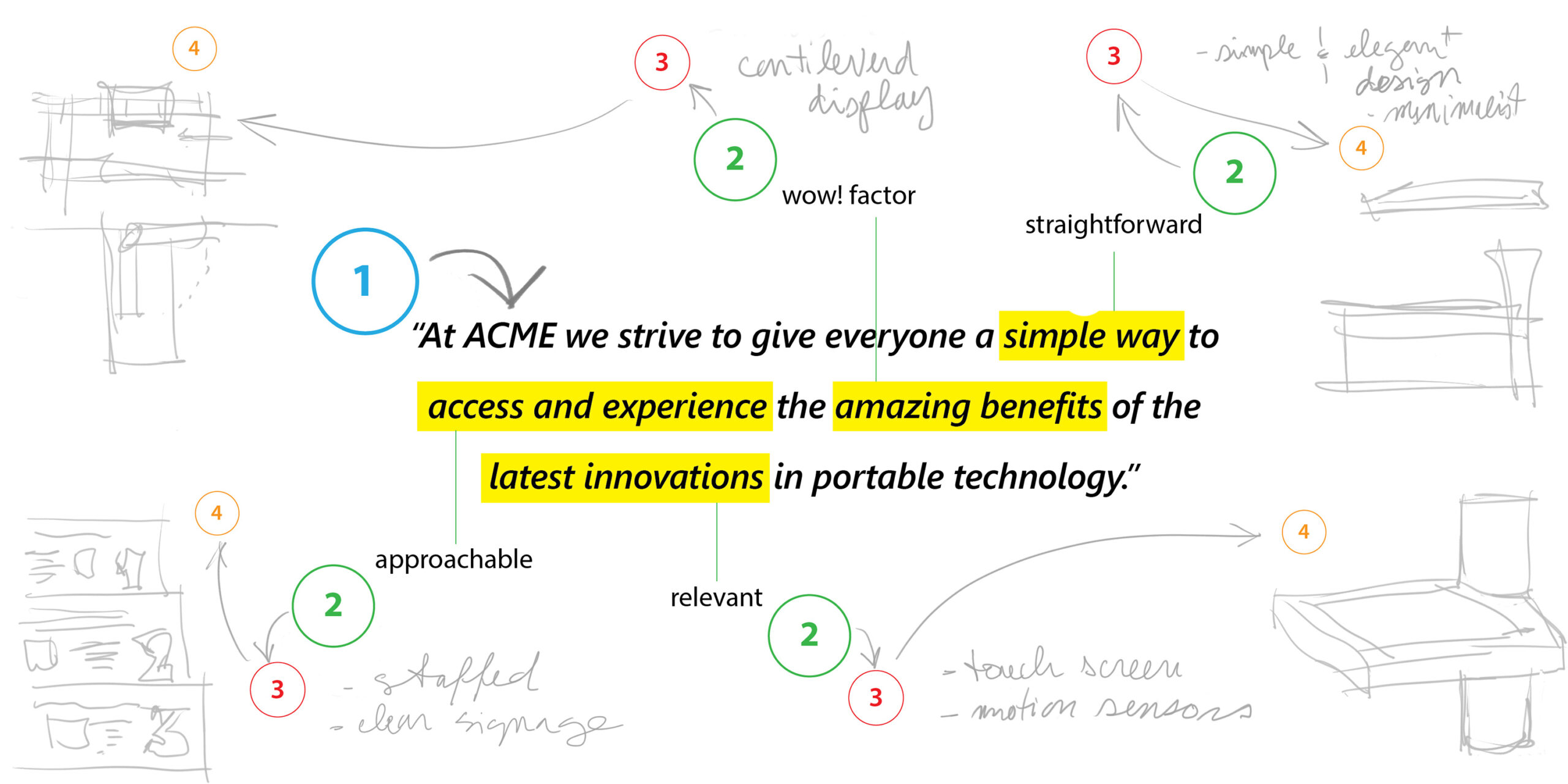
It’s all about the Concept
Design Theory
While working with major brands around the world we have noticed that the success of the project is often established at the pre-concept phase. As an architectural and design firm we revel in helping brand stakeholders distill their wish list to one statement that is inevitably the real blueprint for the project.
The Pre-Concept Phase: Desired Perception
Hand in hand with a Brand Identity is the desired perception from a brand’s positioning. What it stands for (quality, innovation, fun…etc.) and would like to be perceived as, from what it is communicating. Of course this is a nuanced matter, where many factors can come into play. Like the size of a target audience and how crowded the sector is. Nevertheless, at this stage you are clearly stating the aim of the brand.
Distilling the Brand Identity
The aim is to identify the non-negotiables – the elements that are fundamental to the brand’s DNA. These could be values like sustainability, innovation, or customer-centricity or even moods. Once these core elements are identified, they serve as the guiding principles for all subsequent design decisions. There is no next step until this is clear to all, and mind you, we haven’t picked up a pencil to sketch yet.
Creating a Cohesive Design Brief
A well-crafted design brief is the cornerstone of your successful retail design project. It should be concise yet comprehensive, capturing the essence of the brand while providing clear direction for the design team. The brief should outline the project’s objectives and key deliverables, ensuring that everyone involved is aligned and working towards the same goals. In short, it’s a way to keep the project on its rails.
Translating Goals into Design
With a clear design brief in hand, the next step is to unleash the team’s creativity in translating those sentences into physical objects. Without fault, design goals always create a big idea, or at least a clear theme. Technically speaking we are still in the concept phase, just know that at this stage you have past the biggest hurdle, things get easier from here.
Iterative Design Process
Design is an iterative process, and it’s important to remain flexible and open to feedback. Plans will change, as will colors and materials. However, the big idea, or the goals written in your design brief need to remain the blueprint. The natural evolution of the design process, especially when there are many stakeholders, will see more than its fair share of fine-tuning and tweaking – its to be expected, and usually creates a product that checks all the boxes.
Conclusion
In conclusion, the success of your retail design project is often determined long before your first Pinterest board or the first sketch is drawn. By clearly defining the brand’s identity and objectives during the pre-concept phase, and translating these into a cohesive design brief, you can create retail spaces that are not only unique but also embody the essence of the brand.